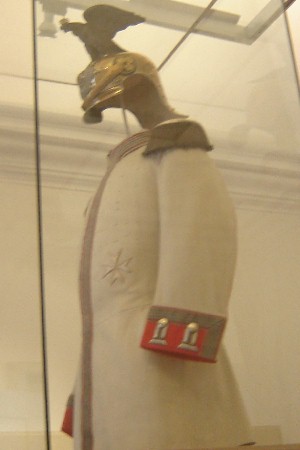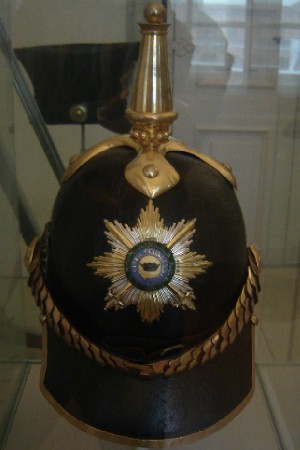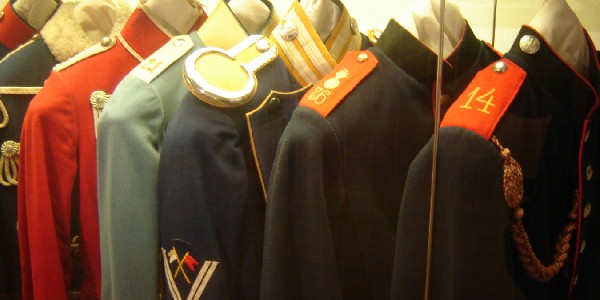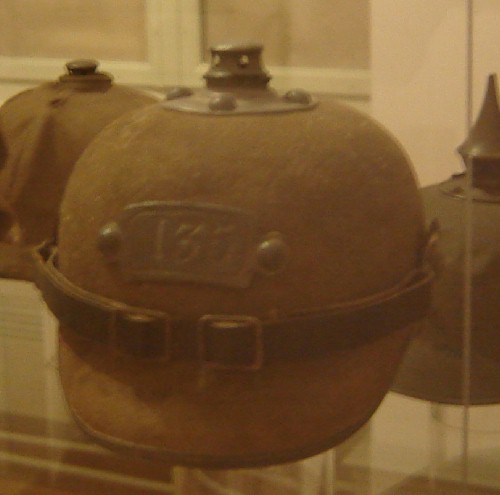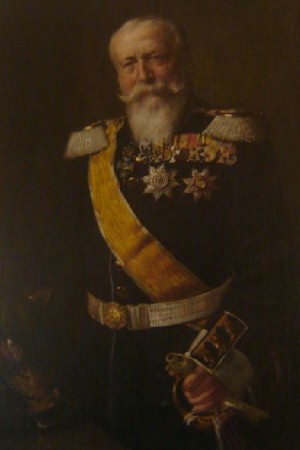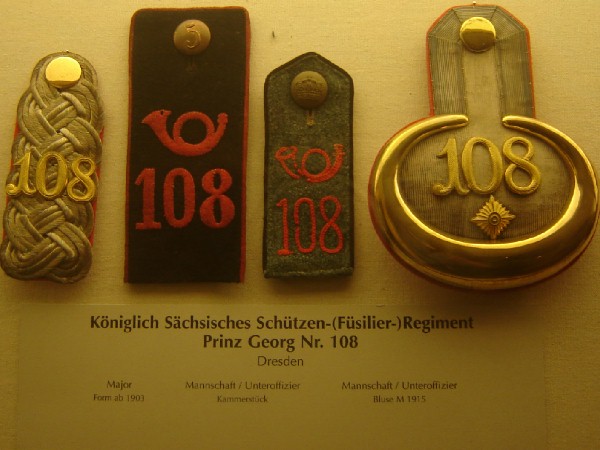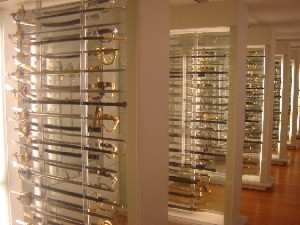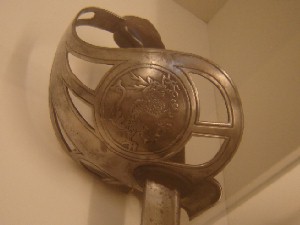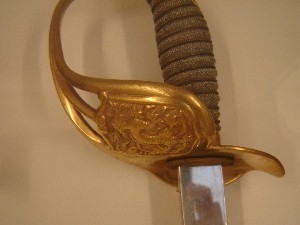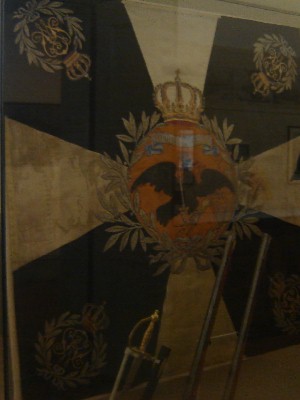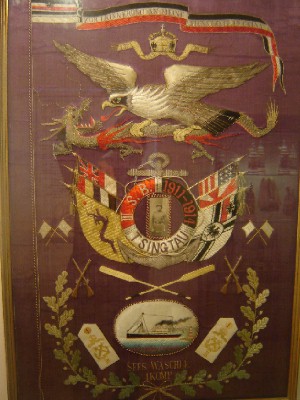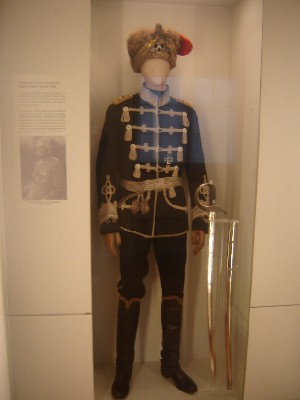|
|
|
|
|
The Wehrgeschichtliches Museum
Collection, Rastatt
|
|
|
|
|
|
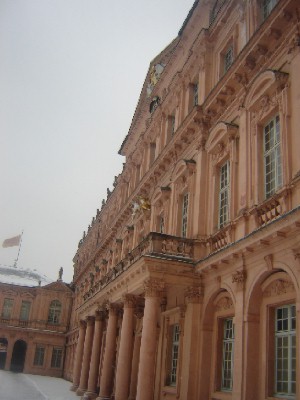 |
The Military History
Museum in the Palace at Rastatt has an extensive collection of German
uniforms and weapons going back to the Turkish Wars of the 17th
Century, through the Napoleonic era and up to the First World War.
While it concentrates mainly on the Baden and Württemberg armies (the
museum initially opened as the Baden Army Museum in the 1930s) it also
has items from the other German states. Its collection of Imperial
German uniforms and insignia is stunning. Amongst the many exhibits is
an interesting display of colonial headdress, photographed below.
The museum is housed in
the South wing of the baroque palace of the Grand Dukes of Baden,
Schloss Rastatt,
built by Margrave Ludwig
Wilhelm of Baden for his wife, Sibylle Auguste of Saxe-Lauenburg,
between 1700 and 1709. It was based on the style of Versailles and
is a very beautiful and impressive sight in itself.
Guided tours of the
palace are included in the entry price. For updated details of
opening times, entry prices and further information see the official
website-
WGM-Rastatt.de
Wehrgeschichtlichen Museum
Rastatt im Schloss Rastatt
Herrenstraße 18
76437 Rastatt
The official website for the palace is at-
Schloss-Rastatt.de
|
|
| |
|
|
| |
|
Display of German
Colonial Headdress at the Wehrgeschichtliches Museum, Rastatt |
|
|
|
|
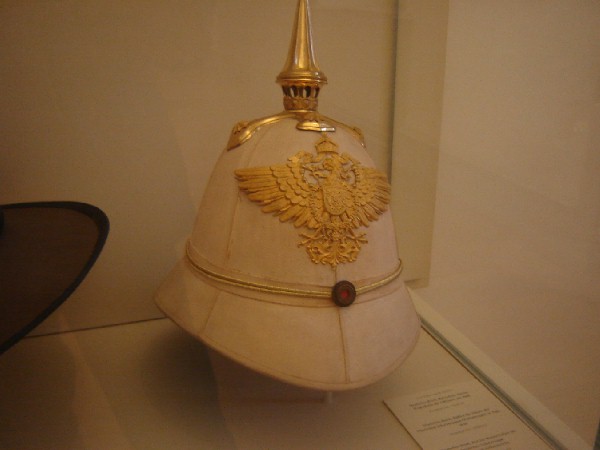 |
|
Schutztruppe
Tropical Helmet
This is a Schutztruppe officers tropical
helmet as authorised for the Schutztruppe of East Africa (and later
Cameroon) in the uniform regulations of 4th June 1891. It
is a tall cork/pith helmet covered in white cloth. It has a
Pickelhaube style spike and an imperial eagle with spread wings above
a small imperial cockade. Around the hatband are two bands of yellow
metallic lace, as worn only by officers. The spike was only worn on
parade and was then replaced with a white ventilation pommel. The
eagle was also removable for active service. A khaki cover could be
worn over the helmet in the field in which case the cockade was worn
on the front of the cover.
The spike and eagle were discarded from
tropical helmets in the uniform regulations of 19th November 1896.
|
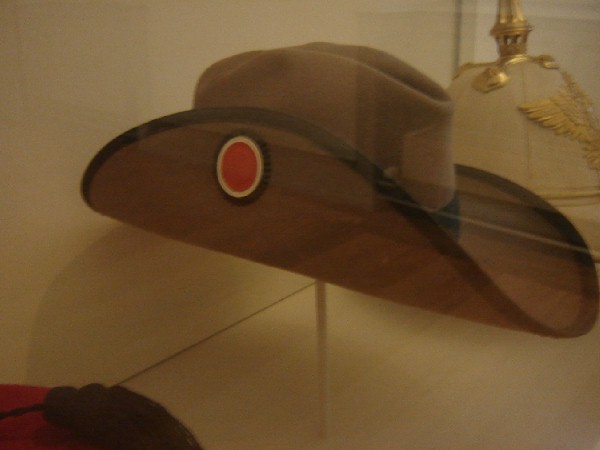 |
|
Schutztruppe Südwester
This is an other ranks Südwester hat as
worn by the Schutztruppe of South West Africa. It is made of grey felt
with hatband and edging in blue ribbon (for South West Africa). The
right side of the hat is pinned up with a large imperial cockade.
Note that the central red section of the
cockade is unusually large. Most other examples seen have a more
balanced distribution of red, white and black.
|
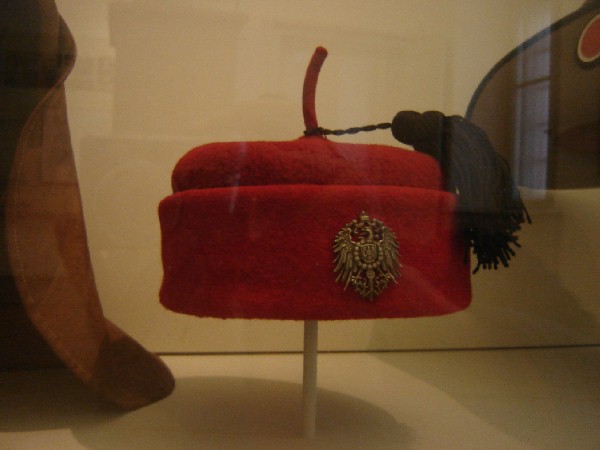 |
|
Togo Polizeitruppe Fez
This is a red
felt rolled fez as worn by African other ranks of the Togo
Polizeitruppe from 1891 until 1914, although it was partially
replaced by a peaked cap from about 1910. The same style of rolled fez was
also worn by African other ranks of the Cameroon Polizeitruppe and Schutztruppe.
Curiously the imperial eagle on this fez has standing wings, as
opposed to the spread wings design usually seen on fezzes worn in
Togo. The tassel has also been tied around the base of the red tip of
the fez. Usually the tassel would emerge from the tip. |
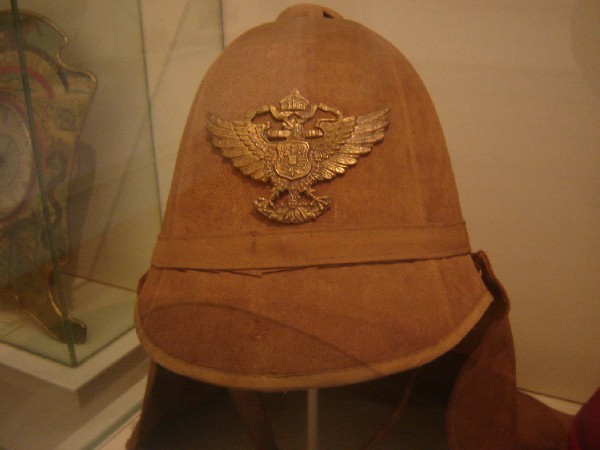 |
|
III. Seebataillon Tropical Helmet This
is a typical other ranks Bortfeldt 1902
khaki tropical helmet as issued to the III. Seebataillon in Tsingtao.
Note the removable khaki neckshade. Similar helmets were issued to
other Marine Infantry units serving in hot climates.
It has a yellow metal imperial naval
eagle on the front. Both the anchor points from under the eagles
talons appear to have broken off. The helmet has also lost its small
imperial cockade from the from of the hatband.
On the underside of the helmet can been
seen an issue stamp- "B.A.O.
1902" for the East Asian Uniform Depot - "Bekleidung
Amt Ost-Asien").
|
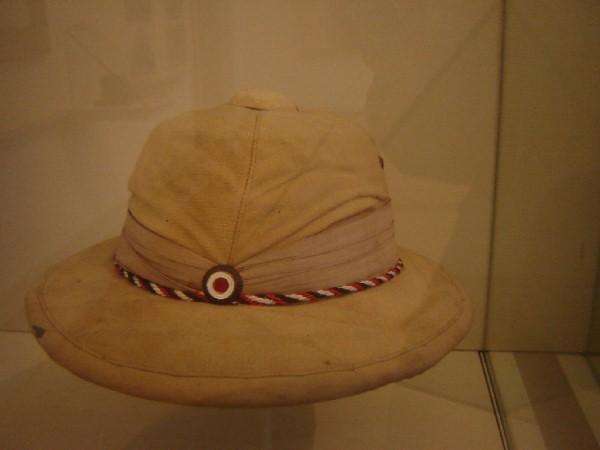 |
|
Schutztruppe Tropical Helmet
The museum
caption for this tropical helmet describes it as one belonging to the
East Asian Pioneers. It does not however have the appearance of one.
The East Asian Pioneer helmet would be a Bortfeldt helmet (see
the Seebataillon helmet above) with a white metal imperial eagle and a
black hatband edged in red. A similar pioneers helmet was on
display at the Rastatt museum several years ago.
This helmet looks more like a 1913 Schutztruppe NCOs helmet
from East Africa or Cameroon. The Schutztruppe uniform regulations of
29th December 1913
authorised a lower style of helmet than previously used with a twisted
cord in the imperial colours for NCOs and a small imperial cockade at
the front, as seen here. The 1913 helmet was authorised in khaki, this
helmet is however covered in white cloth.
|
 |
|
East Asian Pickelhaube
This is an other ranks Pickelhaube as
authorised for the East Asian Expeditionary Corps (and later
Occupation Brigade) on 9th February 1901.
It has a yellow metal spike and
imperial eagle and a brown leather chinstrap. Usually an imperial
cockade would be worn under the right side chinstrap boss, but it is
missing on this example. The helmet itself is made of field grey felt.
Unusually on this example the front and rear peaks are also made of
the same felt. Other examples of the 1900 East Asian helmet seen in
period photographs and private collections all have leather peaks,
front and back. |
| |
|
|
Other Interesting Exhibits at the Rastatt Museum
As you will see from the following photos, if
you have any interest in German military history from the 18th Century to
the First World War a visit to the
Wehrgeschichtliches Museum
in Rastatt is highly recommended. These photographs show only a very small
selection of the Museum's truly amazing collection on display.
|
...in short, a visit to the Wehrgeschichtliches Museum, Rastatt is a great day out...
See the WGM-Rastatt website
for directions, details of prices and opening times.
All photographs on this page taken by C Dale © 2010
Please
contact me here if you have more
information or photos on this topic.
Back to
Main Menu for German Colonial Uniforms
|
|








